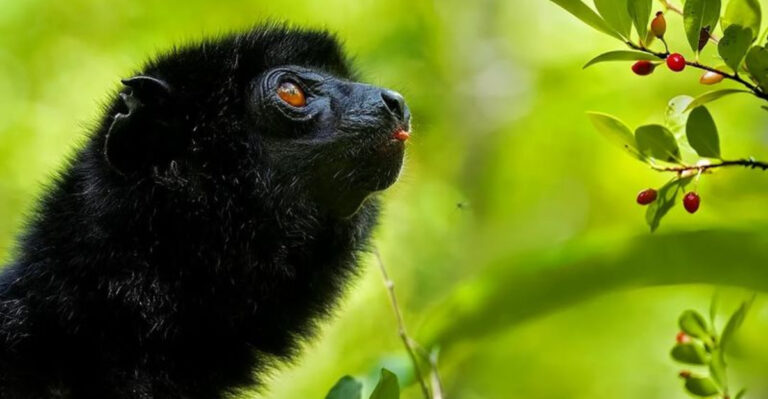12 Terrific Facts About Tarsiers
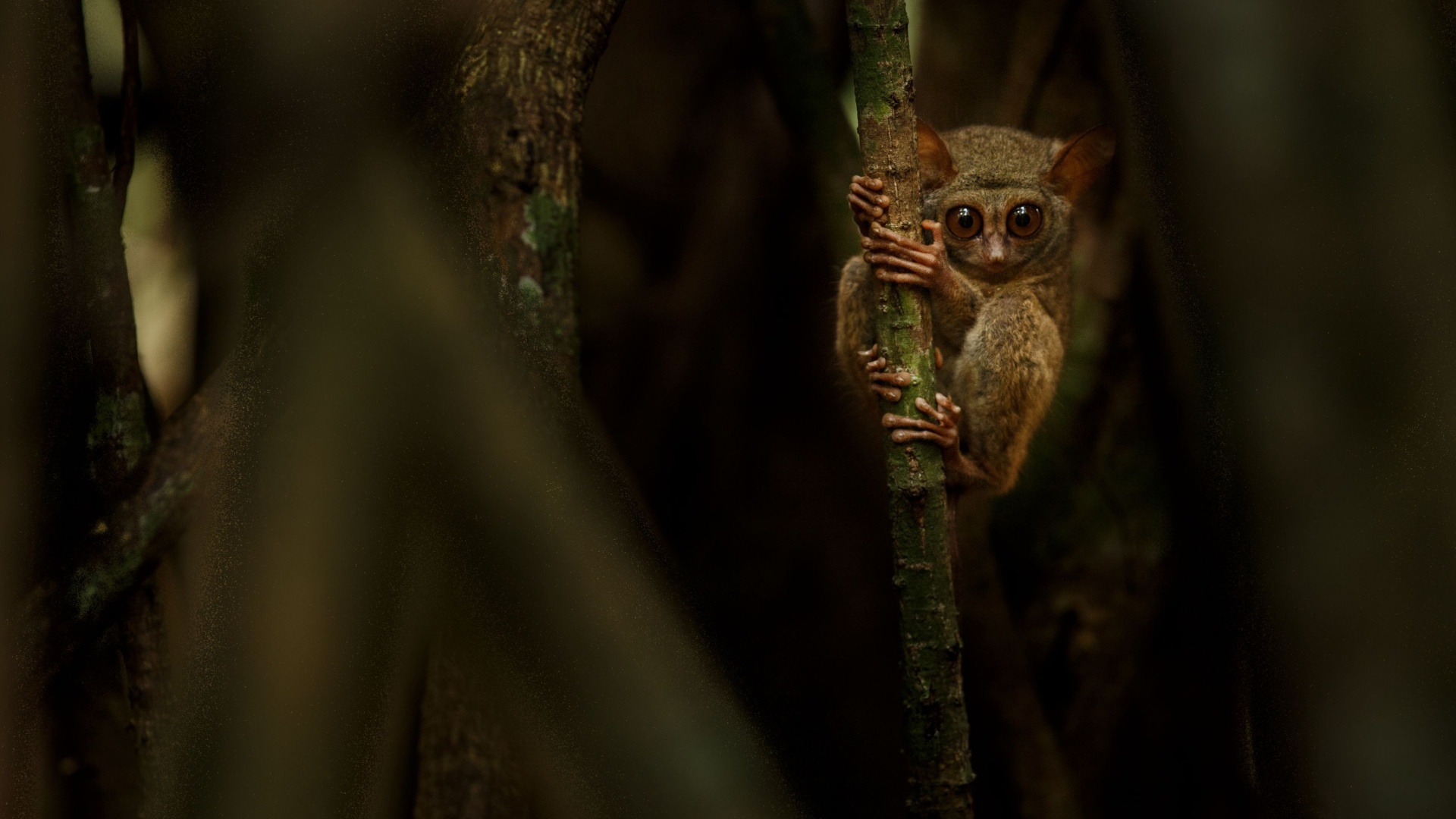
Tarsiers, the small primates with incredibly large eyes, are a fascinating subject for nature enthusiasts. These tiny creatures possess unique traits and behaviors that make them stand out in the animal kingdom.
Let’s explore some amazing facts about tarsiers, offering a glimpse into their intriguing world.
1. Eyes That Captivate
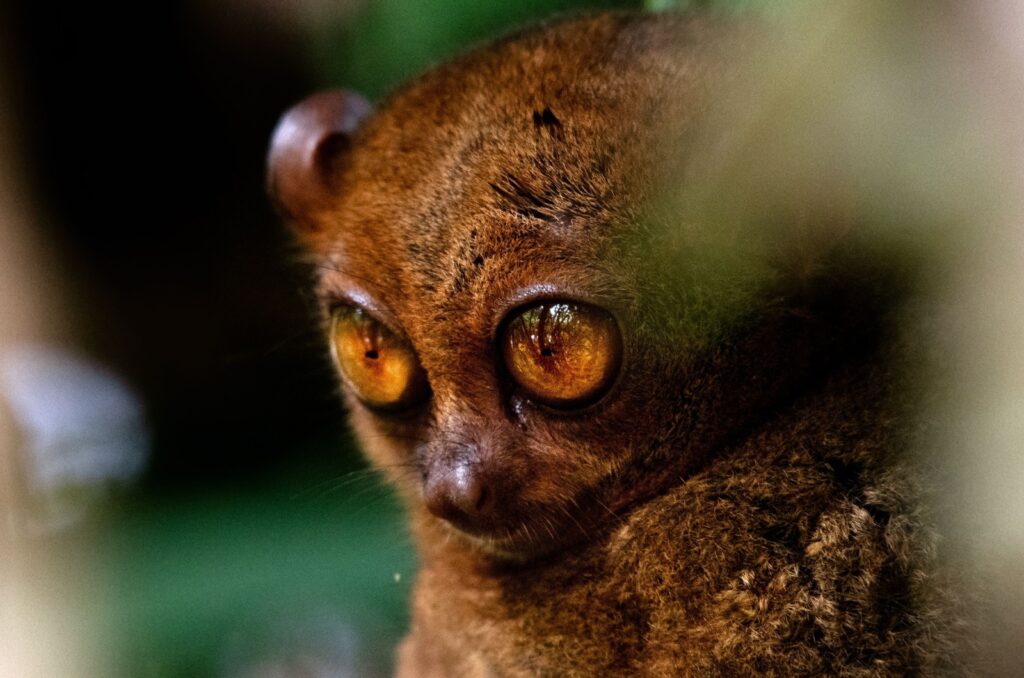
Tarsiers possess eyes that are remarkably large in relation to their body size, making them a standout feature. Each eye is approximately 16mm in diameter, which is large enough that it cannot move in its socket.
Instead, tarsiers swivel their necks like owls, providing a broad field of vision. This unique adaptation aids them in nocturnal hunting, allowing them to spot prey in near-dark environments. Their large eyes have evolved to be highly sensitive to light, owing to a dense concentration of rod cells.
This sensitivity is critical for their survival, as it enables tarsiers to detect even the slightest movement in low-light conditions. Their eyes fascinate scientists, offering insights into evolutionary biology. People often marvel at the sheer size of tarsier eyes, which can be compared to the size of their brains, making them one of nature’s wonders.
2. Amazing Leapers
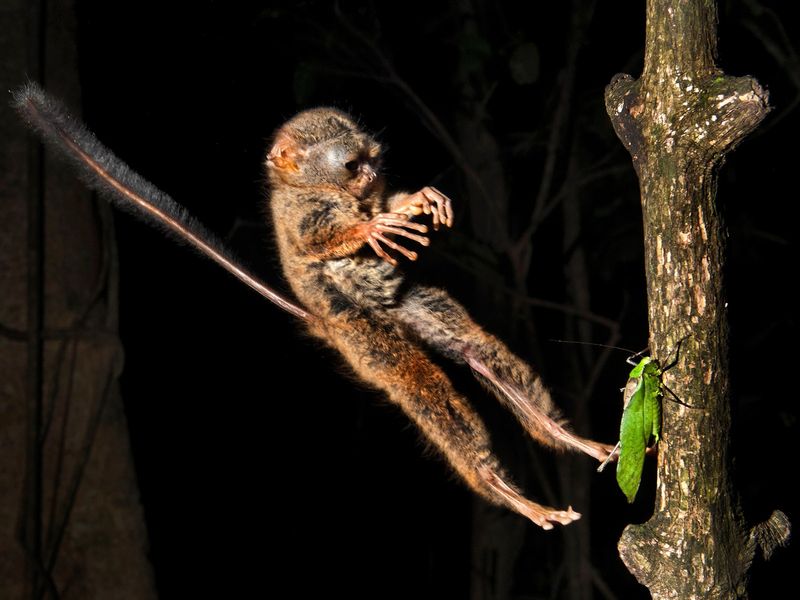
Tarsiers are incredible leapers, capable of jumping distances up to 40 times their body length. This prowess in leaping comes from their elongated tarsal bones, which act like springs. The adaptation allows them to move swiftly through the trees, an essential skill for both catching prey and evading predators.
Their leaping ability is not just for movement; it’s a critical part of their hunting strategy. Tarsiers use their powerful hind limbs to launch themselves silently towards unsuspecting insects and small vertebrates. This surprise element is highly effective in securing their meals.
Observing a tarsier leap is like watching nature’s own acrobat. Their agility and precision highlight the evolutionary adaptations that allow them to thrive in their arboreal habitats. These jumps are not just functional but are also a spectacle of nature’s engineering.
3. Unique Communication
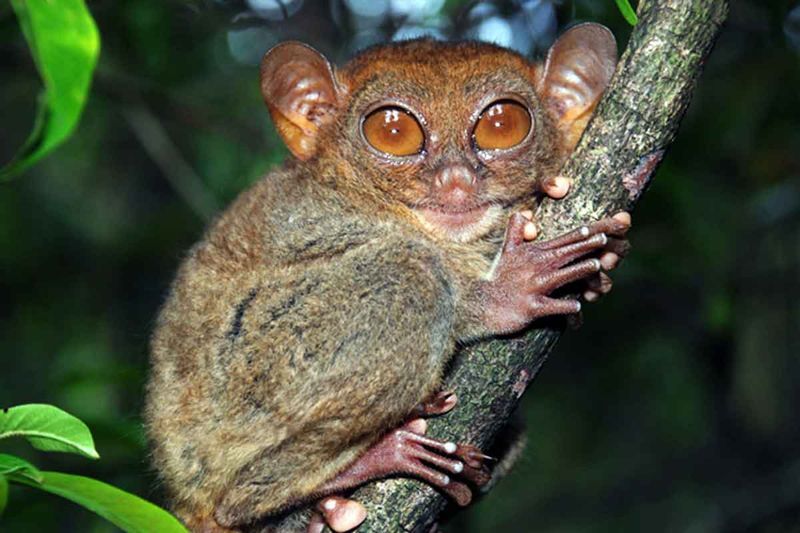
Tarsiers have developed a unique mode of communication that sets them apart from many other primates. They use ultrasonic vocalizations, which are sounds that are beyond the range of human hearing.
These high-pitched sounds serve various purposes, such as signaling danger, establishing territory, or attracting mates. The ability to produce and perceive such sounds gives tarsiers a significant advantage in their dense forest habitats.
This form of communication is highly effective over short distances and through thick foliage, ensuring that their messages are received by the intended recipients without alerting predators.
Scientists are fascinated by this ultrasonic communication, as it provides insight into the complex social interactions and adaptations of tarsiers. Studying these vocalizations can reveal much about their behavior and social structures in the wild.
4. A Diet Of Carnivores
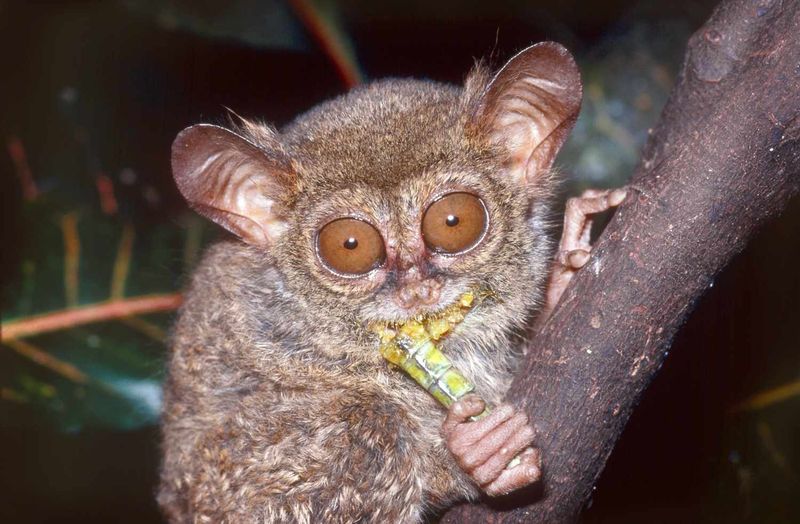
Unlike many other primates, tarsiers are strictly carnivorous, feeding primarily on insects, small birds, and lizards. Their diet is a reflection of their hunting prowess, relying on stealth and precision to capture their prey.
This carnivorous diet provides them with the necessary nutrients and energy to sustain their active lifestyle. Tarsiers hunt primarily at night, using their excellent night vision and acute hearing to locate and ambush prey.
They are known for their rapid and precise movements, quickly snatching insects in mid-air or plucking small reptiles from branches.
Their role as predators in their ecosystem is vital, helping to control insect populations and maintain the balance of their forest environments. Observing a tarsier in action during a hunt is a testament to their evolutionary adaptations and their place in the food chain.
5. Solitary Creatures
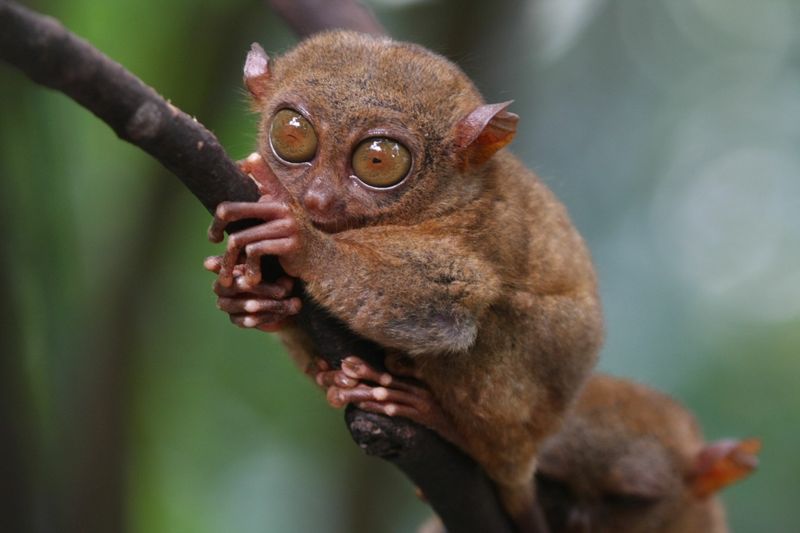
Tarsiers are predominantly solitary creatures, preferring to spend much of their time alone rather than in groups. This solitary nature is an adaptation to their environment and lifestyle, minimizing competition for food and resources.
Each tarsier maintains its own territory, which it defends against intruders. This lifestyle also influences their social behaviors. Interactions between tarsiers are typically brief and primarily revolve around mating or territorial disputes.
The solitary nature of tarsiers has intrigued scientists, as it contrasts with the social structures observed in many other primate species.
Understanding the solitary habits of tarsiers provides insights into their behavioral ecology and the evolutionary pressures that have shaped their lives. It also underscores the need for careful observation and study to uncover the nuances of their interactions.
6. Habitat Preferences
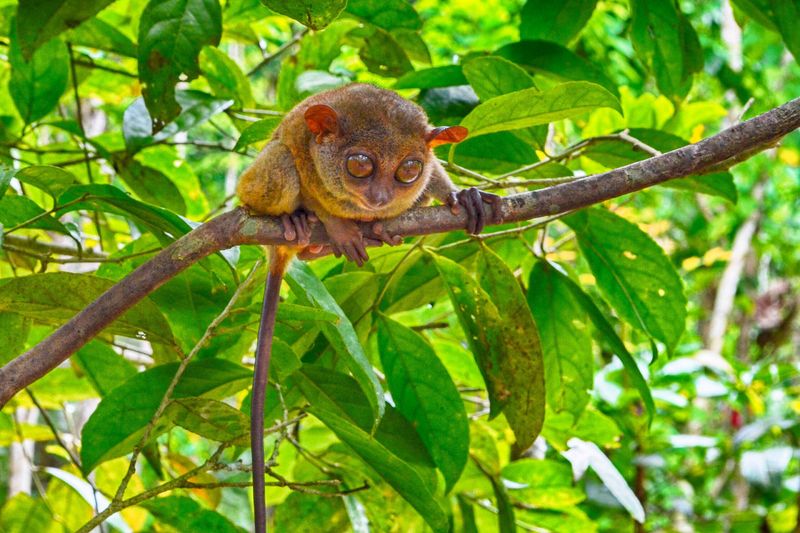
Tarsiers are native to Southeast Asia, inhabiting the dense forests of countries like Indonesia, the Philippines, and Malaysia. Their habitat preferences are closely tied to their arboreal lifestyle, with a strong affinity for secondary forests and thickets, where they can find ample food and shelter.
These forests provide the ideal environment for tarsiers, offering numerous hiding spots and abundant prey. The dense canopy protects them from larger predators and helps maintain a stable microclimate crucial for their survival.
The habitat of tarsiers is under threat from deforestation and habitat destruction, posing significant challenges to their survival. Conservation efforts are crucial to protect these unique ecosystems, ensuring that tarsiers and other endemic species can thrive. Preserving their habitats is essential not only for tarsiers but for maintaining biodiversity in these regions.
7. Nocturnal Adaptations
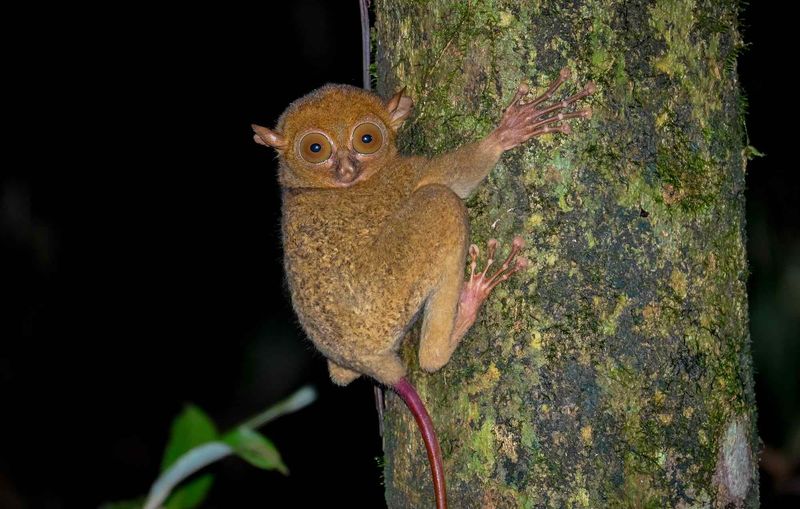
Tarsiers possess several adaptations that make them highly efficient nocturnal creatures. Their large eyes and sensitive hearing are their primary tools for navigating the dark, allowing them to detect prey and avoid predators with remarkable precision.
The tarsier’s nocturnal lifestyle is further supported by their cryptic coloration, which helps them blend into the night and avoid detection. This camouflage is crucial for both hunting and evading threats in their environment.
Their nocturnal adaptations are a fascinating example of evolution at work, demonstrating how species can develop specialized traits to thrive in specific ecological niches. For tarsiers, these adaptations are key to their survival and success as night-time hunters in the dense forests of Southeast Asia.
8. Lifespan And Reproduction
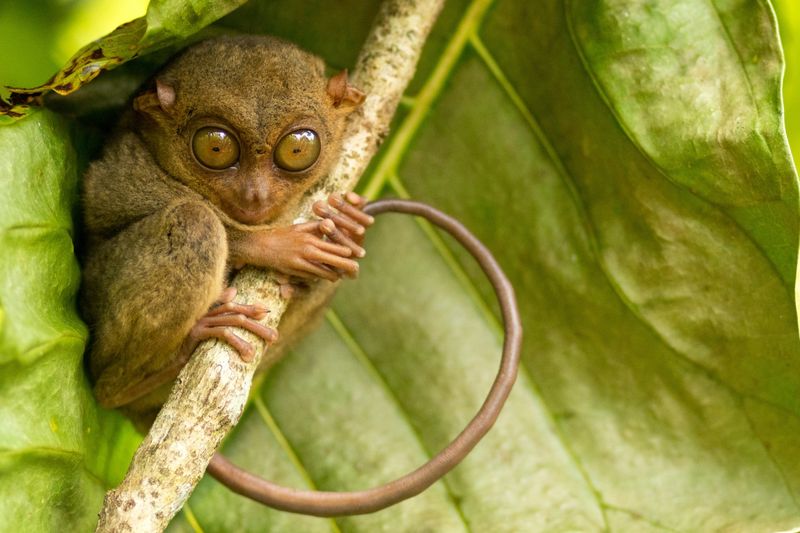
The lifespan of a tarsier in the wild averages around 12 to 24 years, a significant duration for a small primate. This longevity is influenced by their solitary lifestyle and the relative absence of predators in their natural habitats.
However, tarsiers face threats from habitat destruction and human activities. Tarsiers reproduce slowly, with females typically giving birth to a single offspring at a time. The young are cared for intensively by their mothers until they are ready to fend for themselves.
This extended maternal care ensures that the young tarsiers develop the necessary skills to survive independently.
The reproductive strategies of tarsiers, characterized by low birth rates and high parental investment, reflect their adaptation to stable but limited environments. Understanding these aspects of their life history is crucial for developing effective conservation strategies to protect them.
9. Cultural Significance
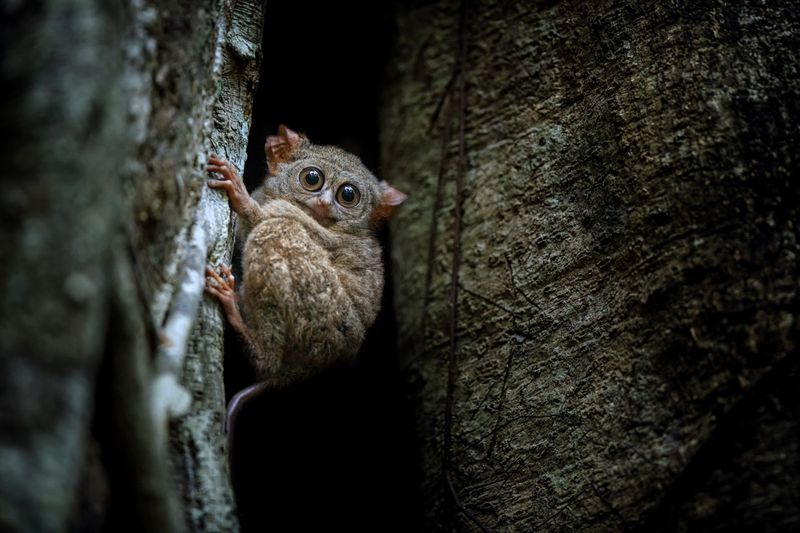
Tarsiers hold a significant place in the cultures of Southeast Asia, where they are often featured in folklore and traditional art. In some cultures, tarsiers are considered symbols of good luck and are revered for their mysterious and elusive nature.
Their unique appearance and behaviors have inspired myths and stories, often highlighting their large eyes and nocturnal habits. These cultural representations play a role in shaping the perception of tarsiers within local communities, influencing attitudes towards conservation.
Appreciating the cultural significance of tarsiers helps foster local support for conservation efforts, as preserving these creatures also means preserving part of the region’s cultural heritage. Engaging communities in conservation initiatives is essential for protecting both the biodiversity and cultural landscapes of Southeast Asia.
10. Evolutionary History
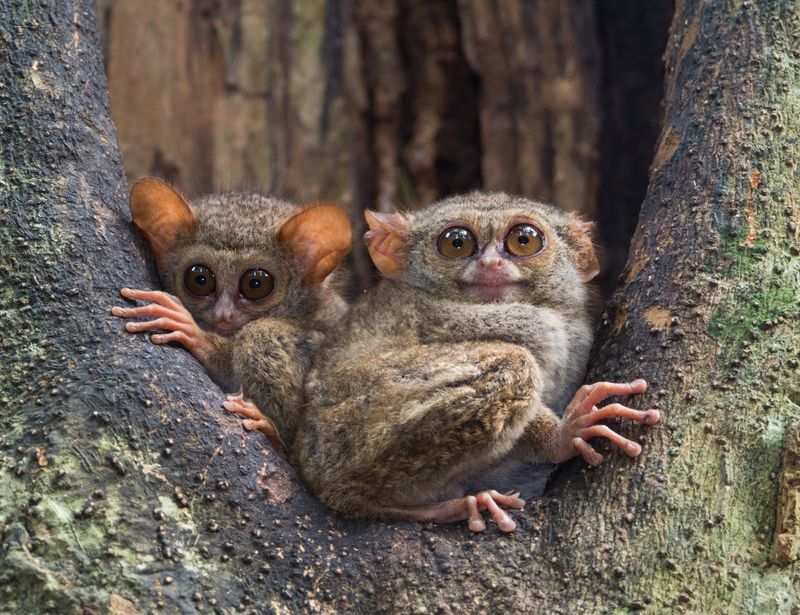
Tarsiers have a long evolutionary history, dating back approximately 45 million years. This ancient lineage makes them one of the oldest living primates, providing valuable insights into primate evolution. Fossil records show that tarsiers have retained many primitive features that are absent in other modern primates.
Their evolutionary journey has been marked by adaptations that allow them to thrive in their current habitats, despite significant environmental changes over millions of years. These adaptations include their unique visual and auditory capabilities, which are crucial for their survival.
Studying tarsiers’ evolutionary history not only enriches our understanding of primate evolution but also sheds light on the processes that drive biodiversity. Their continued existence in rapidly changing environments highlights the resilience of life.
11. Threats And Conservation
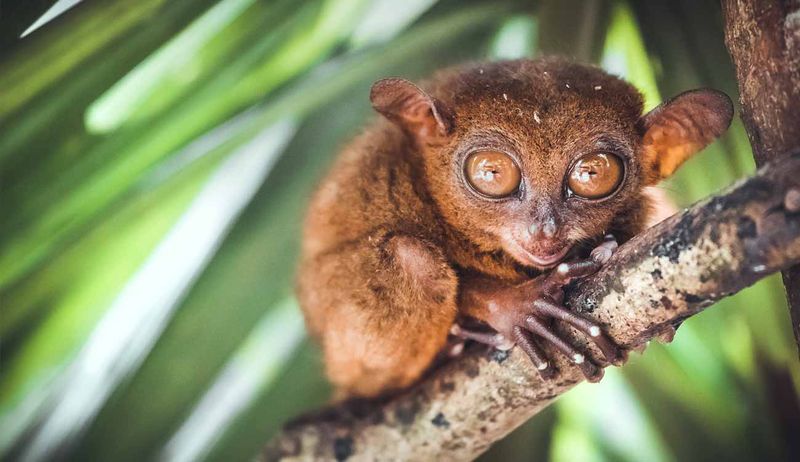
Tarsiers face numerous threats, primarily from habitat loss due to deforestation and agricultural expansion. These activities fragment their habitats, reducing available resources and making survival more challenging.
Additionally, illegal wildlife trade poses a significant threat to their populations. Conservation efforts are crucial to ensure the survival of tarsiers. Protecting their habitats through the establishment of protected areas and promoting sustainable land use practices are vital steps.
Educating local communities about the importance of tarsiers and involving them in conservation projects can enhance these initiatives.
The plight of tarsiers highlights the broader challenges of wildlife conservation in Southeast Asia. By focusing on protecting these unique primates, we contribute to the preservation of biodiversity and the health of ecosystems that many species depend on.
12. Tarsiers In Research
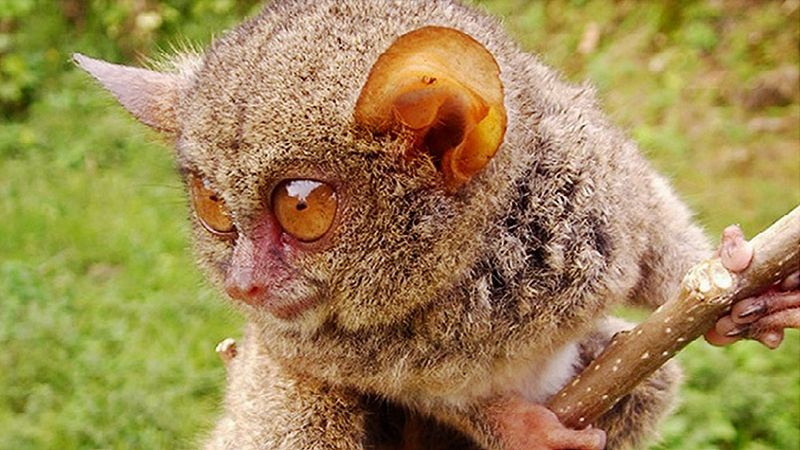
Tarsiers are an important subject in scientific research, offering insights into various fields such as evolution, behavior, and ecology. Their unique characteristics make them a fascinating model for studying primate biology and the evolutionary processes that shape life.
Research on tarsiers contributes to our understanding of sensory adaptations, particularly their visual and auditory capabilities. These studies have broader implications, helping scientists understand similar adaptations in other nocturnal animals.
The study of tarsiers also emphasizes the need for conservation, as research often highlights the threats these creatures face. By integrating research with conservation efforts, scientists can develop strategies that address the needs of tarsiers while preserving their natural habitats. This holistic approach is essential for ensuring the long-term survival of these captivating primates.






